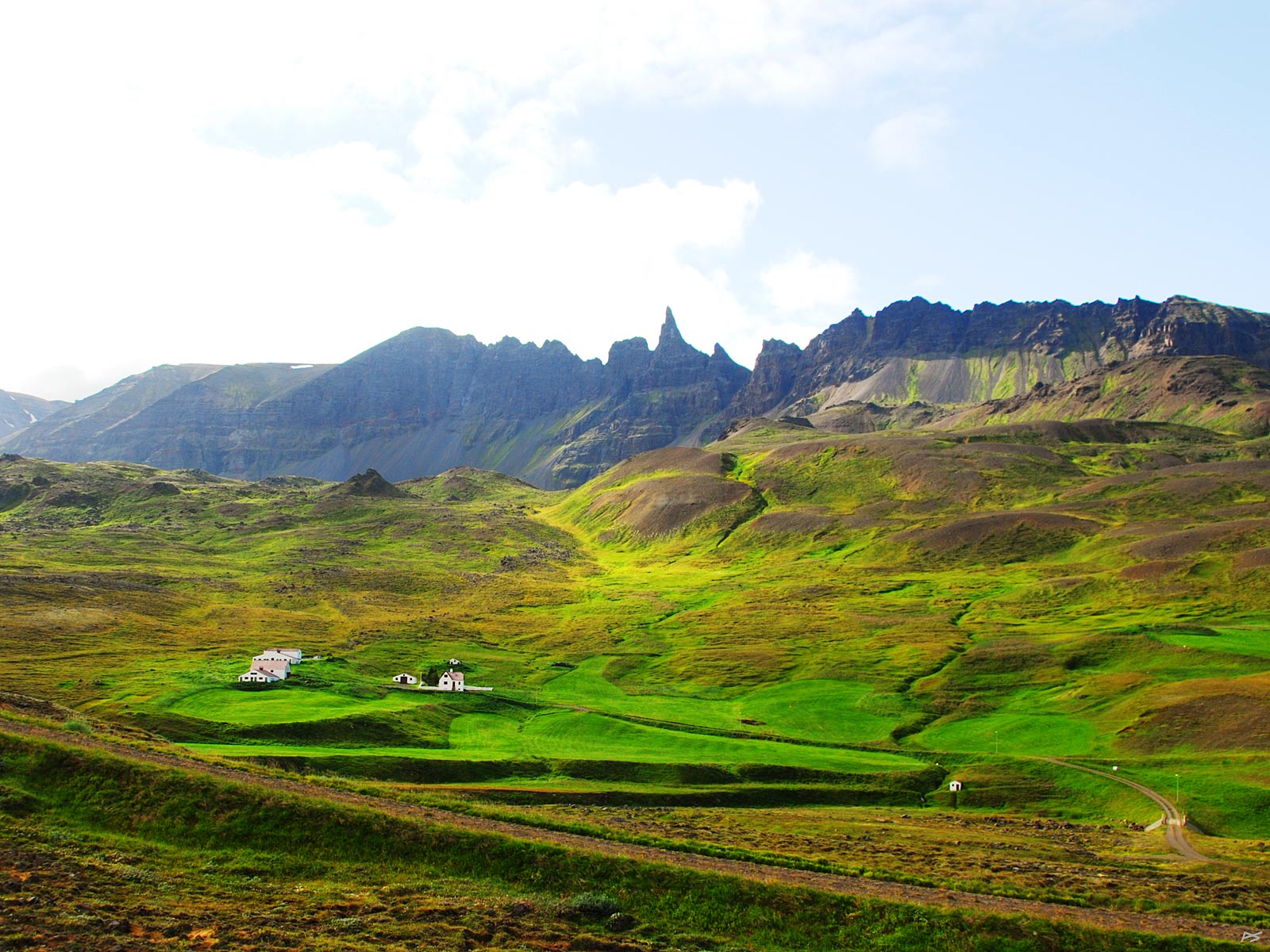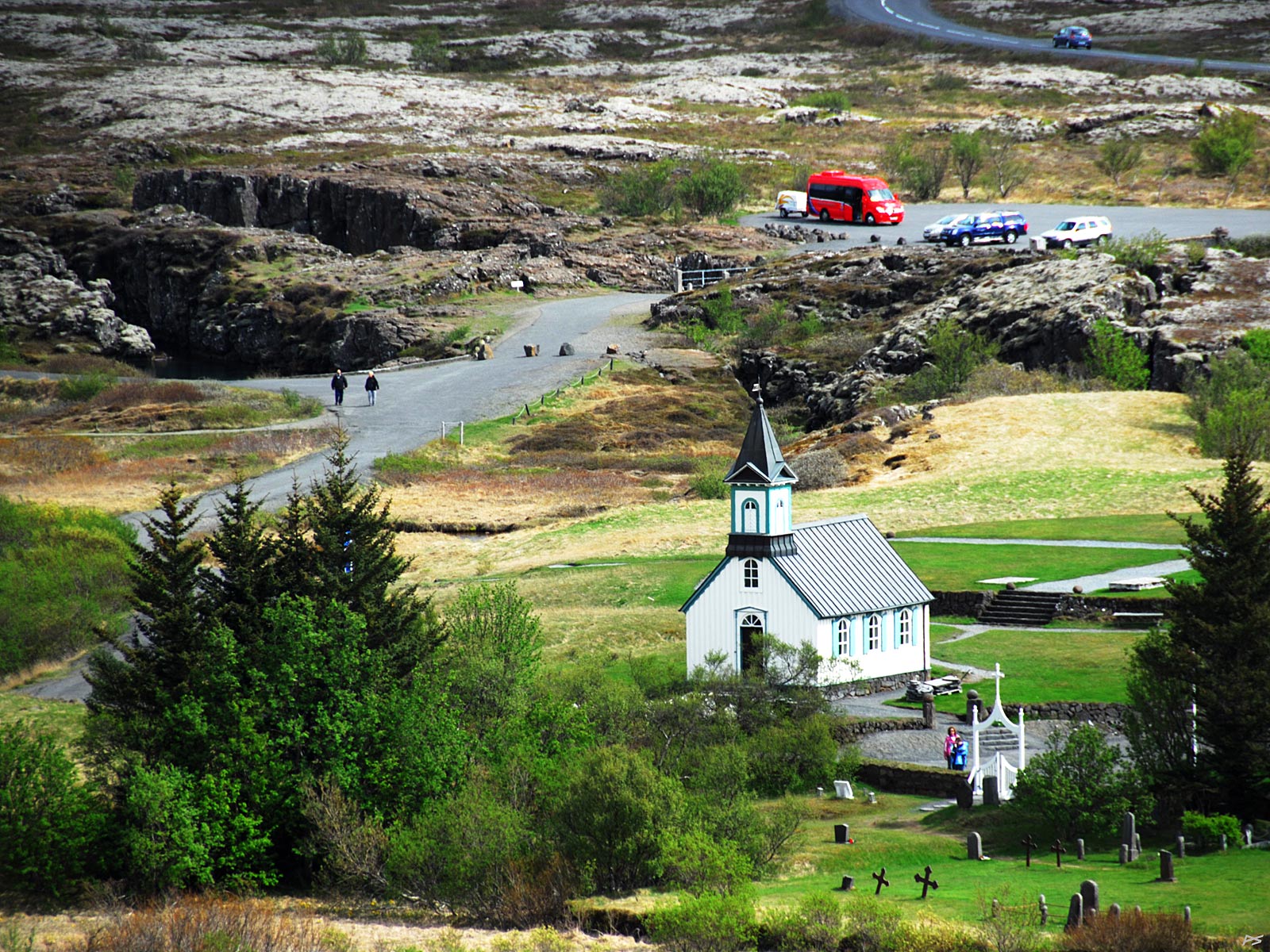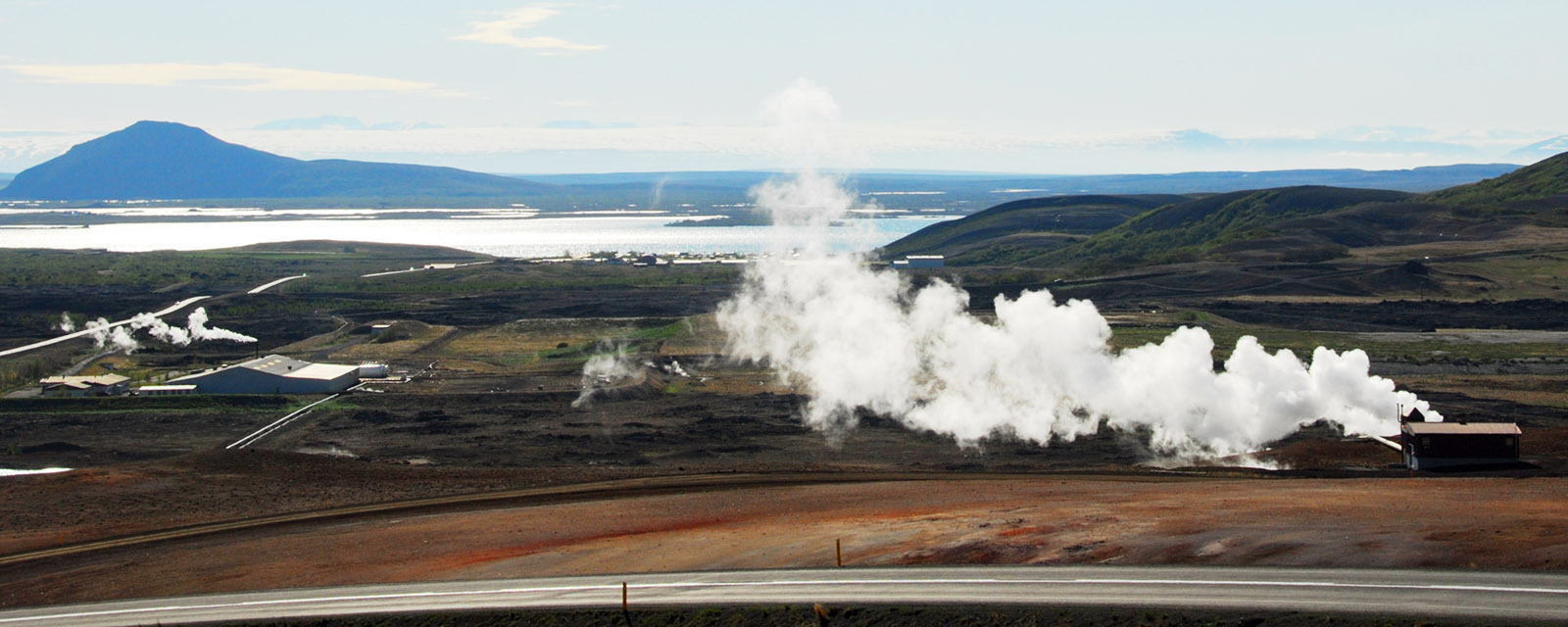The birthplace of Jónas Hallgrímsson

(2013-08-06)
The farm Hraun in Öxnadalur, west of Akureyri. Jónas Hallgrímsson was born here in 1807. As the hostess in the café up the road commented, this must have been a very lonely place at that time. Jónas became a scientist and a popular patriotic poet and also translated foreign (including scientific) literature into Icelandic and then coined many new Icelandic words. Please note that Icelanders never adopt foreign words (officially), they make new ones. Just one example (surely not attributed to Jónas):
computer – tölva [from tala (=number) and völva (=prophetess in the old religion)
laptop – fartölva (=travel-computer)
tablet – spjaldtölva (=card/slate-computer)
Written Icelandic hasn't changed much the last eight hundred years. Thus school children are still able to read the writings of Snorri Sturluson from the early twelve hundreds.
Another matter is of course the language spoken by the young ones ;)

(2010-06-01)
Jónas died 1845, 37 years old, and was buried in Copenhagen. In 1941 Iceland became an independent nation with the accompanying pride, and shortly after the war (1946) his remains were dug up and reburied in the National Burial Ground in Þingvellir (above). From 1996 on his birthday 16 November has been celebrated as Icelandic Language Day.

From his tombstone

(2010-06-07)
Jónasarlundur, a grove planted from 1951 on and dedicated to the memory of Jónas Hallgrímsson (1807–1845). It is now a well kept resting-place with trees, benches, toilets and washing facilities. On the other side of the river a farmer is tilling the obviously dry soil. Jónas' birthplace Hraun is the next (and next last) farm up the valley (left). Behind the mountain range Háafjall with this incredible peak Hraundrangi (alt. 1075 m) can be seen.


From poster

(2010-06-07)
A closer look at Hraundrangi (from the farm name Hraun (= lava) and drangur = pillar), probably the dream of many mountaineers. It is claimed that this peak inspired the construction of the proud Hallgrímskirkja in Reykjavík.

(2013-08-06)
Unfortunately hydroelectric power is damaging to nature in two ways: Dry rivers and giant water reservoirs change the landscape, and the hight voltage power lines are thorns in the eyes of a lot of people. The poster (August 2013) shown is about the pylons that supports the lines (text in Icelandic is cropped off). Evidently there are plans for a high power line through this beautiful valley, and this is a cry for help to stop it. It won't be easy, because the alternative, underground high power cables, is very expensive. Not only are cost and maintenance of the cables high, for medium long cables the capacitive blind currents must be compensated for, and for very long cables the alternating current must instead be transformed into direct current, and then back to alternating current at the receiving end (which I so far have heard of only for long distance underwater cables).
But let's wish them luck, the few inhabitants of Öxnadalur, and all those that wants to preserve the fantastic nature of Iceland.
Incidentally, Icelanders are clever at hiding their local power grid, also when the houses are scattered. A few times my observant lady in the passenger seat commented: "One might think that they don't have electric power here". We didn't find out how they do it.
The Öxnadalur power line conflict reminds me of a more serious one around 1970, some 120 kilometres east by road. That conflict was solved – with dynamite:
Mývatn and its discharge river Laxá constitute a especially rich ecosystem. The fifty kilometres long river is considered the best one for fishing Atlantic Salmon and Brown Trout.
In 1970 there were two small hydroelectric power plants in Laxá, but a third one, much larger, was planned. This involved building a large dam, flooding several farms after they had been expropriated. (There were also plans to divert other rivers into Mývatn, but they were abandoned.) Neither the affected farmers nor the other people in the area were ever consulted, and their loud protests had no effect. The summer of 1970 the construction had started.
Then on a "sunny night" (it's close to the Arctic Circle), 25 August 1970, the people went to the river. There they found some dynamite left by the constructors and used it to blow up a small dam.
In the Akureyri court 65 were charged and got a suspended sentence, while 113 demanded to be charged. The names of the three men that mounted the dynamite and lit the fuse were never revealed.
However, the noise reverberated all over the country and far beyond, and the original construction plans were abandoned. The third power plant was built, but it is small an unintrusive.
[Several details here are taken from a 2013 thesis by Sigríður Bylgja Sigurjónsdóttir, which essentially treats the present conflict over plans for building 90 MW geothermal power plant, an expansion of the small Bjarnarflag plant just east of Mývatn.]

(2010-06-05)
The geothermal power plant Bjarnarflag (3 MW) east of Mývatn, the Ring Road crossing Námafjall in front, continuing in the left half of the picture. On the shore of Mývatn, in the centre of the picture, the village Reykjahlíd may be spotted.
